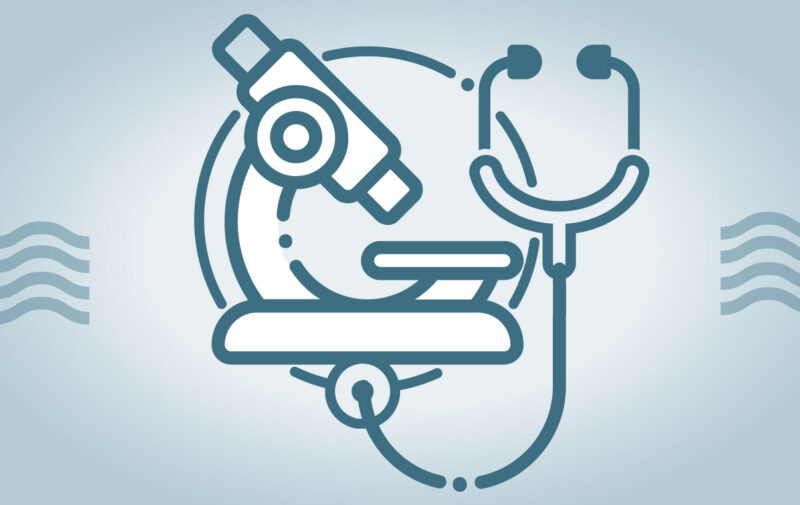
Collaborative Health Sciences Program
Pan-cancer AI-driven Cell-free DNA Sequencing Platform for Reducing Disparities in Early Diagnosis, Molecular Characterization and Surveillance of Multiple Cancer Types
Awarded in
2024
This project aims to address disparities in cancer outcomes by investigating the biology of cancers and the factors that contribute to aggressive cancers or lead to the development of treatment resistance. Researchers will introduce a minimally invasive liquid biopsy testing approach, which is essentially a blood draw, and utilize a new type of testing called fragmentomics to gather more information about a patient’s tumor and patterns of potential treatment resistance or cancer recurrence.
Collaborators: Amy Taylor, MD, assistant professor, Department of Medicine

Collaborative Health Sciences Program
Investigating the Efficacy of Protoporphyrin-based Photodynamic Therapy in Burn Wound Healing in Porcine Models
Awarded in
2024
Current burn treatment and care impose significant financial burdens. In Wisconsin, this is the third highest health care cost, after premature newborns and organ transplant patients. Slow wound healing, pain and scarring remain the major complications of burn survivors. To address health equity in burn wound care, this research aims to explore whether photodynamic therapy, a low-cost medical technology that can be performed by a non-specialist, can speed up burn healing. The project is also expected to yield important insights into burn wound healing that can be translated to the treatment of other wound types.
Collaborators: Aiping Liu, PhD, research scientist, Department of Surgery

New Investigator Program
Leveraging Haplotype Diversity to Study Coronary Artery Disease Risk
Awarded in
2024
This project aims to elucidate the function of a genetic risk factor for coronary artery disease (CAD), the leading cause of death in Wisconsin. Identifying molecular pathways driving CAD risk has the potential to inform actionable targets for preventive medicine and enhance health in the state and across the nation.

New Investigator Program
Liquid Biopsy Biomarkers of Targeted Therapy Resistance in Metastatic ER+ Breast Cancer
Awarded in
2024
This project will pioneer a liquid biopsy approach to identify treatment-resistant and aggressive features in estrogen receptor-positive (ER+) metastatic breast cancer. The innovative technique, using blood samples, aims to predict the efficacy of standard regimens early, enabling personalized treatment strategies and improving outcomes for breast cancer patients in Wisconsin.

New Investigator Program
Determining the Mechanisms by which Common Genetic Variation Affects Molecular and Cellular Traits in Macrocephalic Autism
Awarded in
2024
In response to the rising prevalence of autism spectrum disorder (ASD), this project seeks to uncover genetic modifiers influencing ASD outcomes using innovative genetic studies in diverse human cell lines. This work has the potential to uncover how common genetic variations impact specific traits in brain cells, laying the groundwork for targeted therapeutic strategies.

New Investigator Program
Engineering CAR T Cells to Overcome Variable Antigen Density in Acute Myeloid Leukemia
Awarded in
2024
This project will evaluate precision methods for measuring key indicators of success for a targeted cancer immunotherapy to expand treatment options for patients with acute myeloid leukemia (AML), which typically has low treatment response rates and poses a challenge for inducing remission after relapse. The results of this project will support efforts to improve other targeted immunotherapeutic strategies for AML through broader application of the study methods.

New Investigator Program
Defining a Neuron-pericyte Axis via the Neuropeptide Receptor PAC1 in Melanoma Development and Progression
Awarded in
2024
Dr. Alexander Birbrair, assistant professor in the Department of Dermatology, is leading a crucial research project aimed at advancing treatments for melanoma. Melanoma is the fifth most common cancer in the United States, and it has disproportionately higher mortality rates in racial and ethnic minority populations. Cancer and the nervous system bear a close relationship, and the team is particularly interested in understanding how signaling from a receptor, called PAC1, impacts melanoma progression. The results of this project could inform clinical testing for medications targeting the PAC1 signaling pathway to treat melanoma, ultimately improving survival rates for all melanoma patients.

New Investigator Program
Functional and Genomic Comparison of Ovarian Cancer Cells in Ascites to Primary Tumor and Associated Cell-free DNA
Awarded in
2024
This project aims to transform ovarian cancer care by repurposing tumor cell-containing abdominal fluid (ascites) samples from patients to identify markers of treatment resistance. The ability to easily assess risk of resistance in patients would potentially eliminate the use of ineffective therapy and serve as a signal for determining when second-line therapies should be explored.

New Investigator Program
Meaningful Clinical Trial Endpoints in Gliomas: A Novel Multi-modal Approach to Patients with Incurable Brain Tumor
Awarded in
2024
This project will utilize advanced neuroimaging and molecular pathology methods to evaluate the impact of brain tumor progression on patient neurocognitive function and quality of life while incorporating metrics that are innovative to neuro-oncology research. Through enhanced understanding of cancer progression on patient quality of life, this project aims to transform treatment and care for patients with brain tumors across Wisconsin and beyond.

New Investigator Program
Use of a Translational Lung on a Chip Model to Catalyze Diagnostic and Therapeutic Advances for Aspiration Pneumonia
Awarded in
2024
This project is seeking to develop a novel diagnostic model for aspiration pneumonia (AP) through identification of a unique molecular signature for lung injury due to aspiration. Pneumonia is the leading infectious cause of mortality in older adults and about 15 percent of cases are due to AP, which currently lacks objective diagnostic criteria and methodology for identifying high risk patients. The results of this project could inform identification of effective interventions for AP and promote improved health outcomes for at-risk older adults throughout Wisconsin.